There is a long history of badass superhero vehicles, including the Batmobile, the Fantasticar, and, of course, Wonder Woman’s Invisible Jet. However, not included on that list – nor any list related to badassery – is Spider-Man’s Spider-Mobile. Those unfamiliar with the Spider-Mobile can be forgiven for asking questions like, “Why would Spider-Man even need a car?” and “Wouldn’t that just make it harder for him to get around?” After several decades of publishing history, the Spider-Mobile has yet to really justify its existence.
Most people who live in New York City don’t own a car, and they don’t have the benefit of web-slinging abilities. Still, Gerry Conway and Russ Andru created the wall-crawling Spider buggy roadster in 1974’s Amazing Spider-Man #130, amid more serious tales like The Death of Gwen Stacy. Conway and Andru can’t be entirely blamed, however, as there were some interesting real-world reasons behind the creation of the volatile vehicle.
The Spider-Mobile Has A Bizarre In-Universe Origin
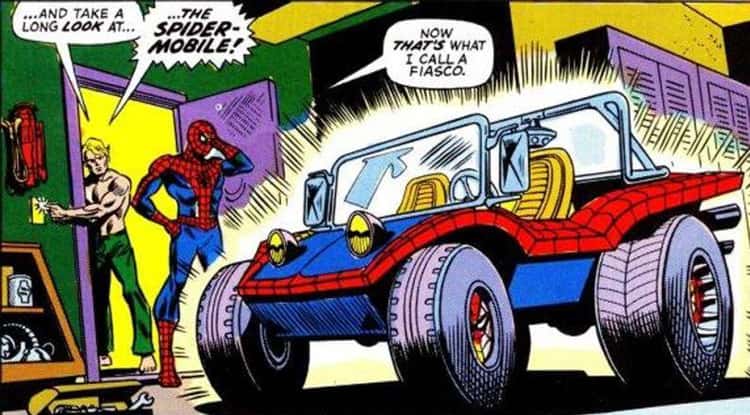
The Spider-Mobile was a corporate invention, both in reality and within the Marvel continuity. In Amazing Spider-Man #130, written by Gerry Conway with art by Ross Andru, a company named Corona Motors hires an advertising firm to promote their new car engine, which claims to be free of pollution, by sponsoring a superhero’s vehicle.
The firm approaches Spider-Man, who mainly travels around by web-slinging and is generally considered to be a menace in New York City. In other words, this wasn’t a very good advertising firm. Even Spidey himself thought the idea was ridiculous and turned down the opportunity to collaborate with Corona Motors.
2. Spider-Man’s Financial Troubles Led To Him Driving The Vehicle
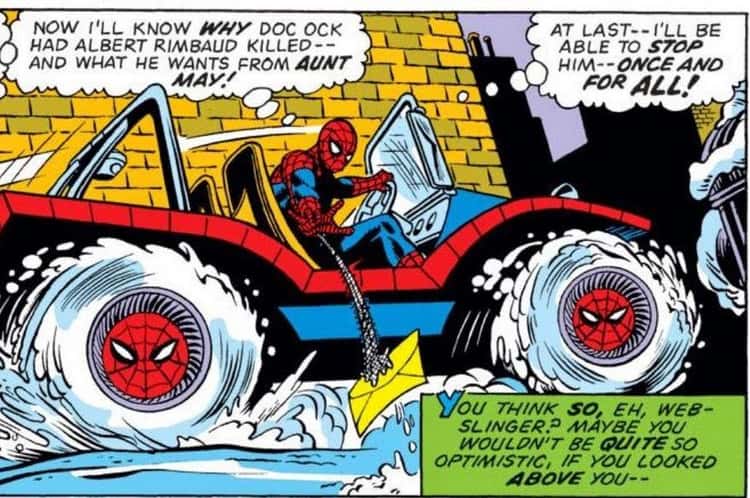
Financial difficulty was a constant theme of early Spider-Man stories, and that’s ultimately what led Peter Parker to make peace with the idea of driving a Spider-Mobile. Corona Motors offered to compensate Spidey for riding around in their four-wheeled advertisement, and the destitute wallcrawler couldn’t say no to an honest paycheck.
He was paid $1,000 for his troubles, which wasn’t really fair compensation for the embarrassment that came with the Spider-Mobile.
3. The Human Torch Helped Build It
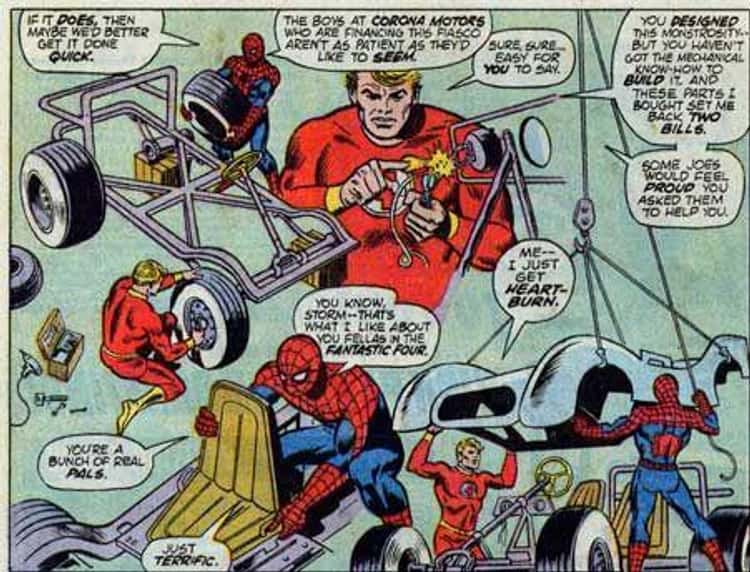
Spider-Man has had many allies during his lengthy career, but one of his closest friends has always been Johnny Storm, better known as the Human Torch. Not only is the Torch a founding member of the Fantastic Four, he’s also a vehicle aficionado known for his skills in the garage.
Spidey asks his fiery friend to help him construct the Spider-Mobile around the pollution-free engine from Corona Motors, and the two collaborate on something that can only be described as an arachnid-themed dunebuggy. Maybe Spidey should have asked the Human Torch to bring his brother-in-law along.
4. The Car Has Some Superpowers Of Its Own
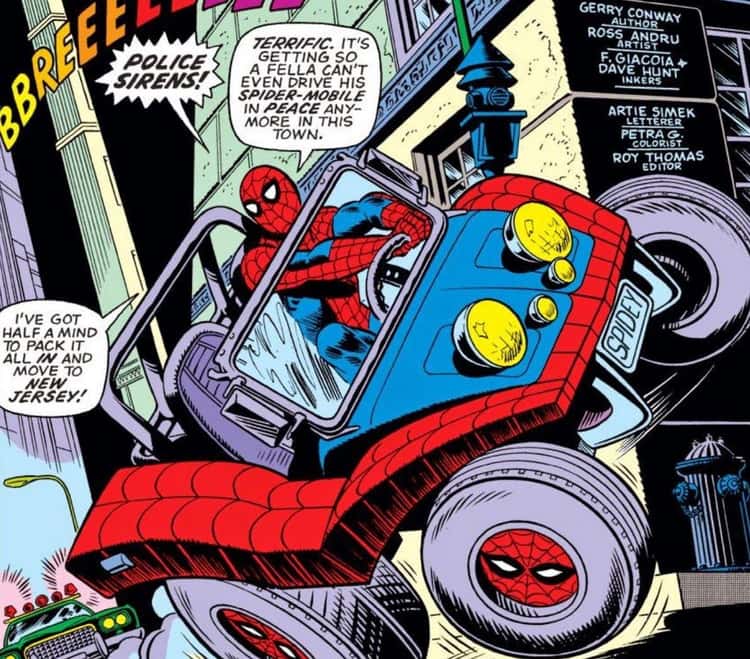
The Spider-Mobile had to have some superpowers of its own, lest it be hideous and useless. Like its driver, the Spider-Mobile could spray webs at enemies and stick to walls, and it also had a Spider-Signal spotlight.
The vehicle also fired gas bombs, which may have seemed in poor taste given Peter’s recent run-ins with the Green Goblin, but he doesn’t seem to notice. For safety features, the Spider-Mobile included web fluid airbags as well as ejection seats, a classic in any comic book vehicle of any kind. It was also tough enough to go head-to-head with Hammerhead.
5. The Vehicle Once Tried To End Him
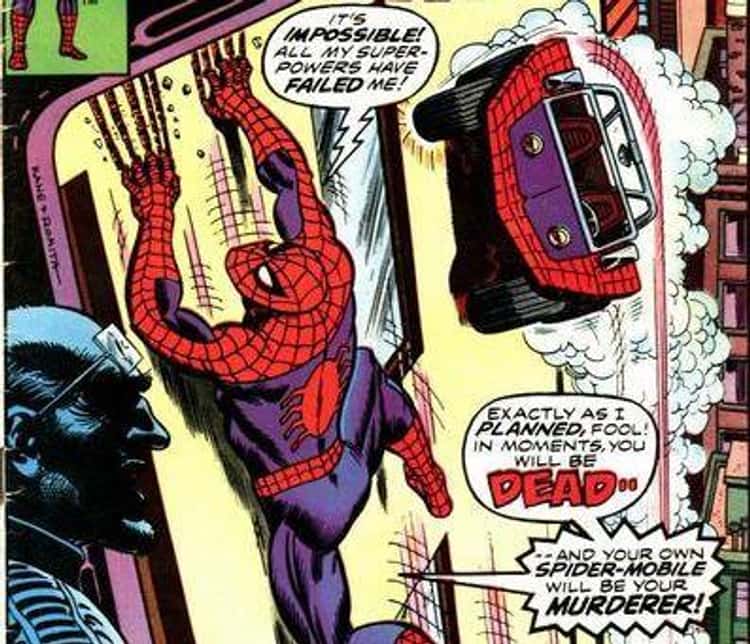
The Spider-Mobile soon returned from its watery grave, and it returned with a vengeance. Spider-Man was shocked to see his former car modified to slay, as it suddenly showed a desire to squash him, Maximum Overdrive-style.
In Amazing Spider-Man #160, The Tinkerer proved to be the culprit, having recovered the Spider-Mobile from the bottom of the Hudson so he could, well, tinker with it. After Spidey beat up his own car, he finally returned it to the advertising firm who initially contracted him, although it wasn’t in pristine condition. Luckily, you can’t sue a person with no public identity.
6. A Sentient Version Of The Spider-Mobile Appeared In The ‘Spider-Verse’ Storyline
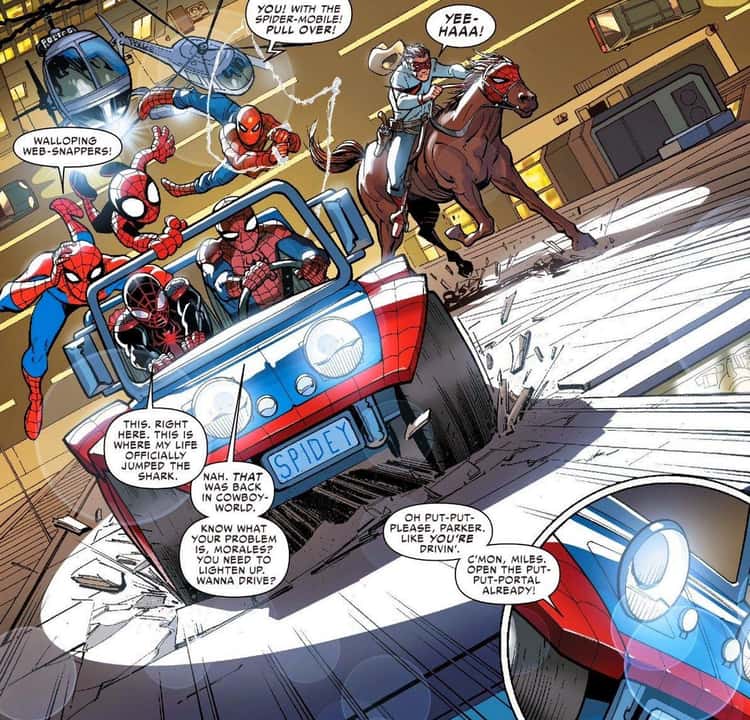
Spider-Verse was a massive crossover series that brought together various Spider-Men from all sorts of alternate universe to battle a family of interdimensional vampires. Miles Morales, Spider-Ham, and even the Spider-Man from the Japanese television adaptation showed up to help Peter Parker in his multiversal fight, and they weren’t the only ones.
Along the way, the Spider-Men encountered Peter Parkedcar, a sentient version of the Spider-Mobile who helped ferry them around the multiverse, recruiting more wallcrawlers.
7. It Has A Spot In The Marvel Smithsonian
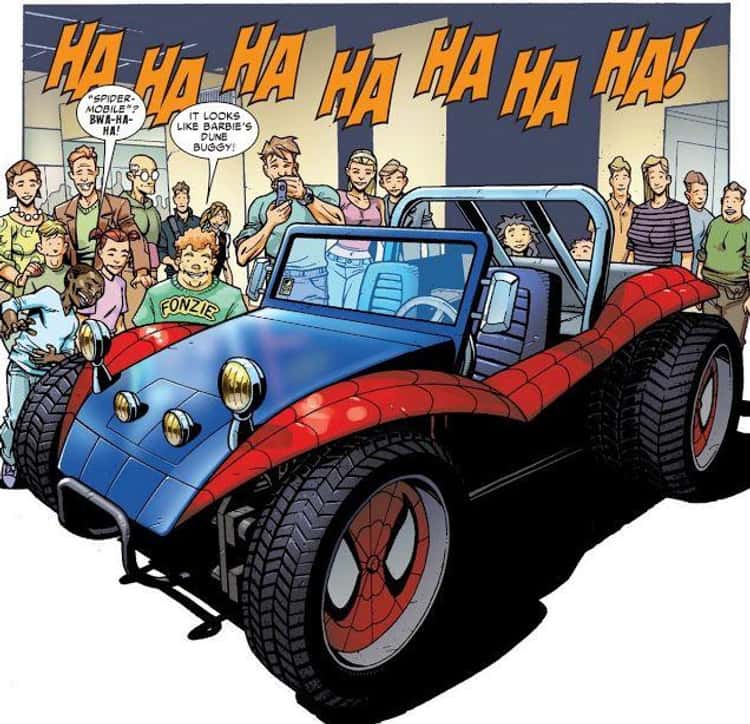
The final resting place for the Spider-Mobile ended up being the Marvel universe’s version of the Smithsonian in Washington. Being that Peter Parker’s identity as Spider-Man isn’t publicly known, the museum didn’t need to seek his permission before putting the car on display.
This led to an unwelcome surprise for Parker when he visited the Smithsonian with a friend and witnessed crowds laughing at the most unfortunate artifact of his superhero career.
7. It Was Co-Opted Into The Dead-Buggy
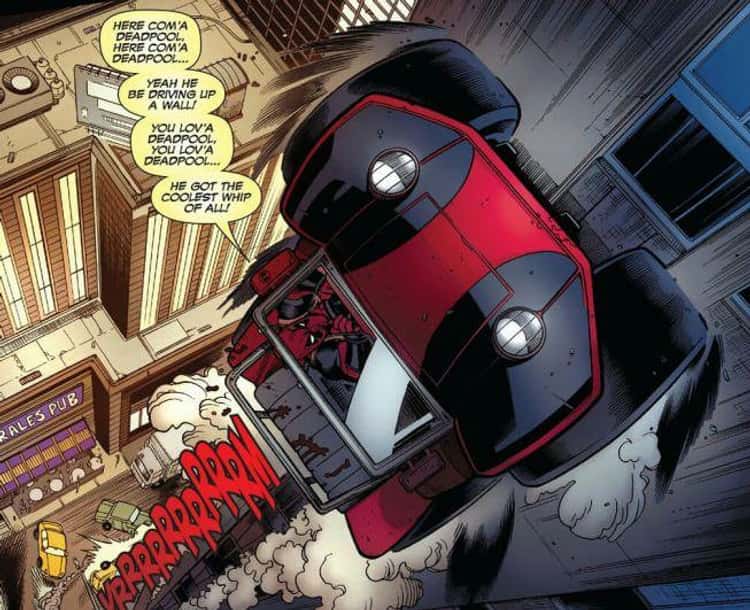
In the mainstream Marvel universe, the Spider-Mobile got a somewhat ironic second life by becoming the Dead-Buggy. Predictably, Deadpool was the culprit behind this reinvention, as he recovered and repaired the Spider-Mobile as a part of his ongoing campaign to become Spider-Man’s best friend. Other than a new paint job, the Spider-Mobile remained mostly the same, although Deadpool couldn’t resist adding in a novelty horn that belted out La Cucaracha.
9. When Peter Parker Got Rich, He Made An Updated Version Of The Car That’s Actually Cool
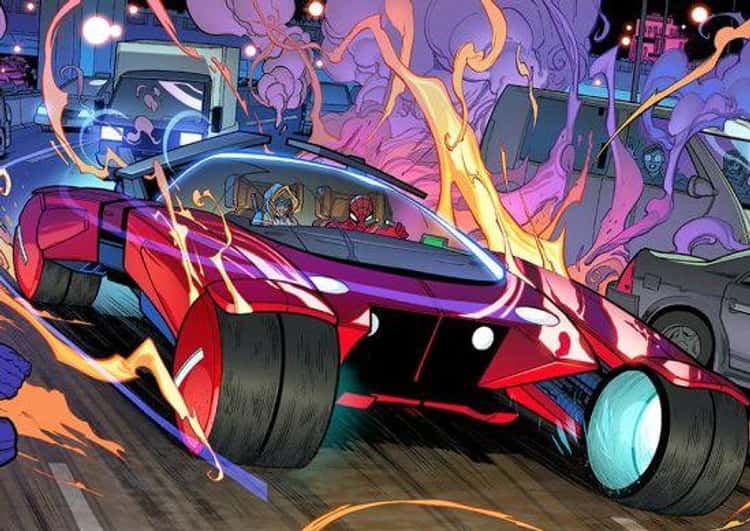
When Spider-Man’s life and body were briefly taken over by Doctor Octopus, his foe used the opportunity to make the most of Peter Parker’s potential, including the founding of Parker Industries. When Parker returned to his body, he found himself the CEO of a worldwide corporation, and he instantly decided to use his newfound fortune for good.
Parker Industries began producing a number of heroic products, including a new, sleeker, and more powerful version of the Spider-Mobile that was actually kind of cool. The cars were used by Spidey and some of his employees on several occasions to save the world.
